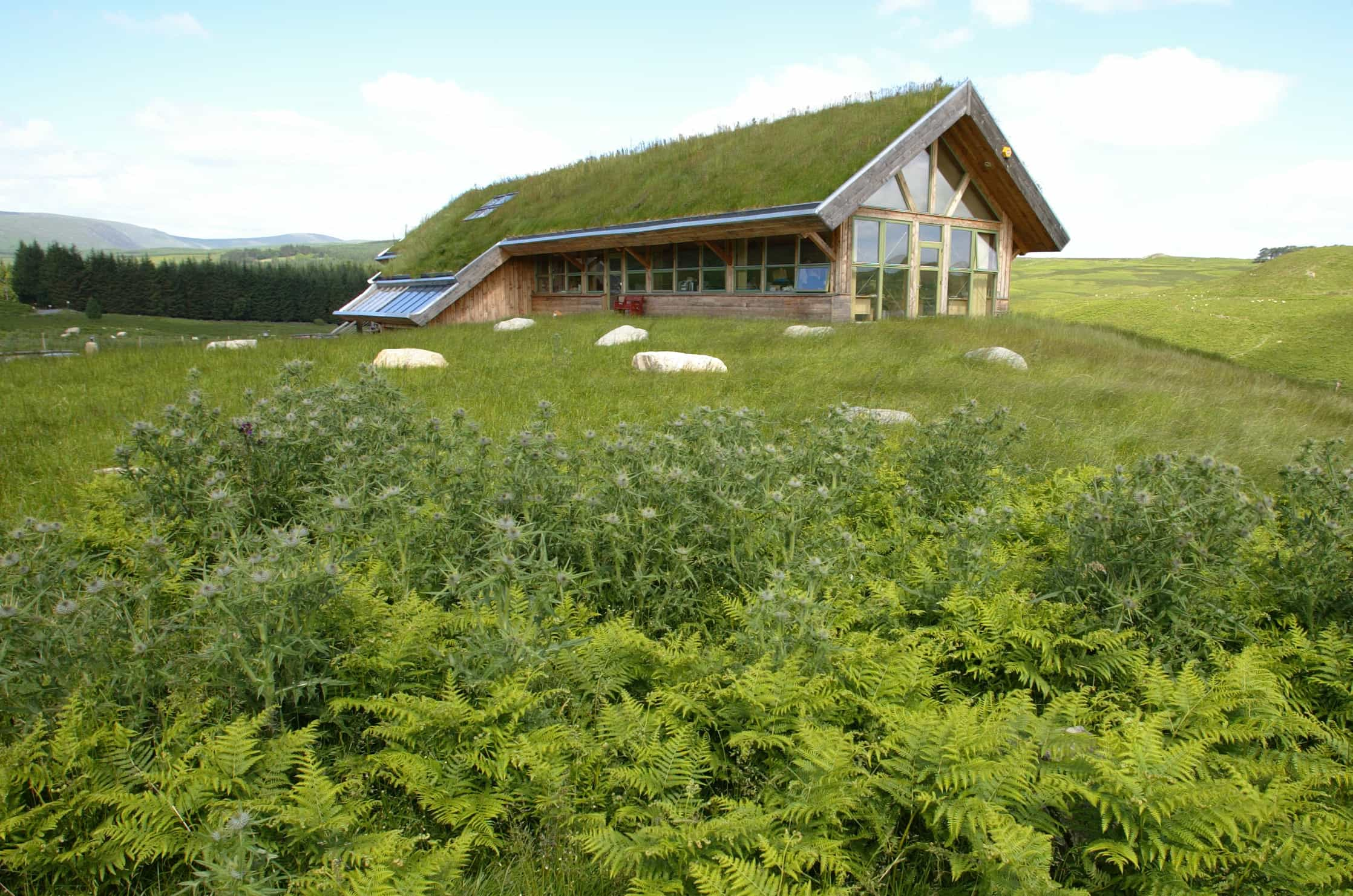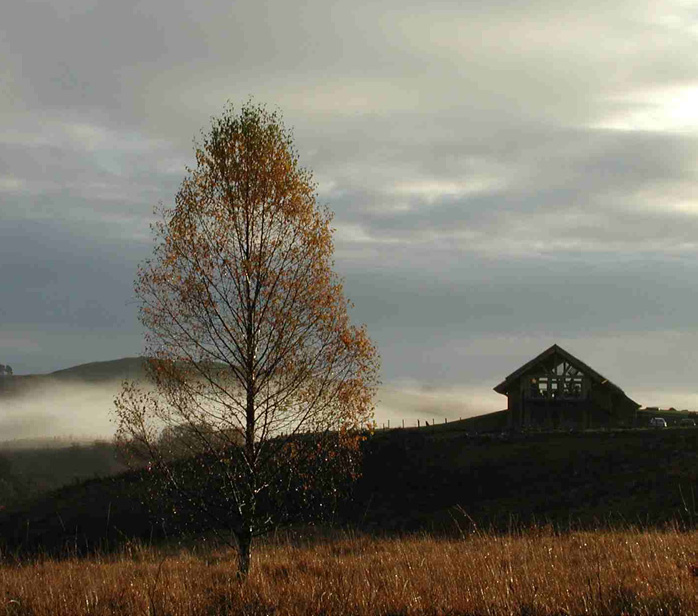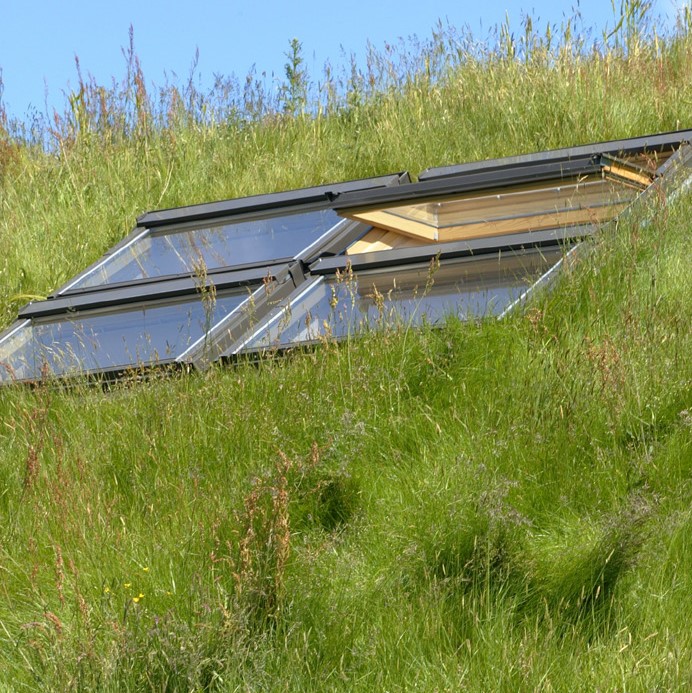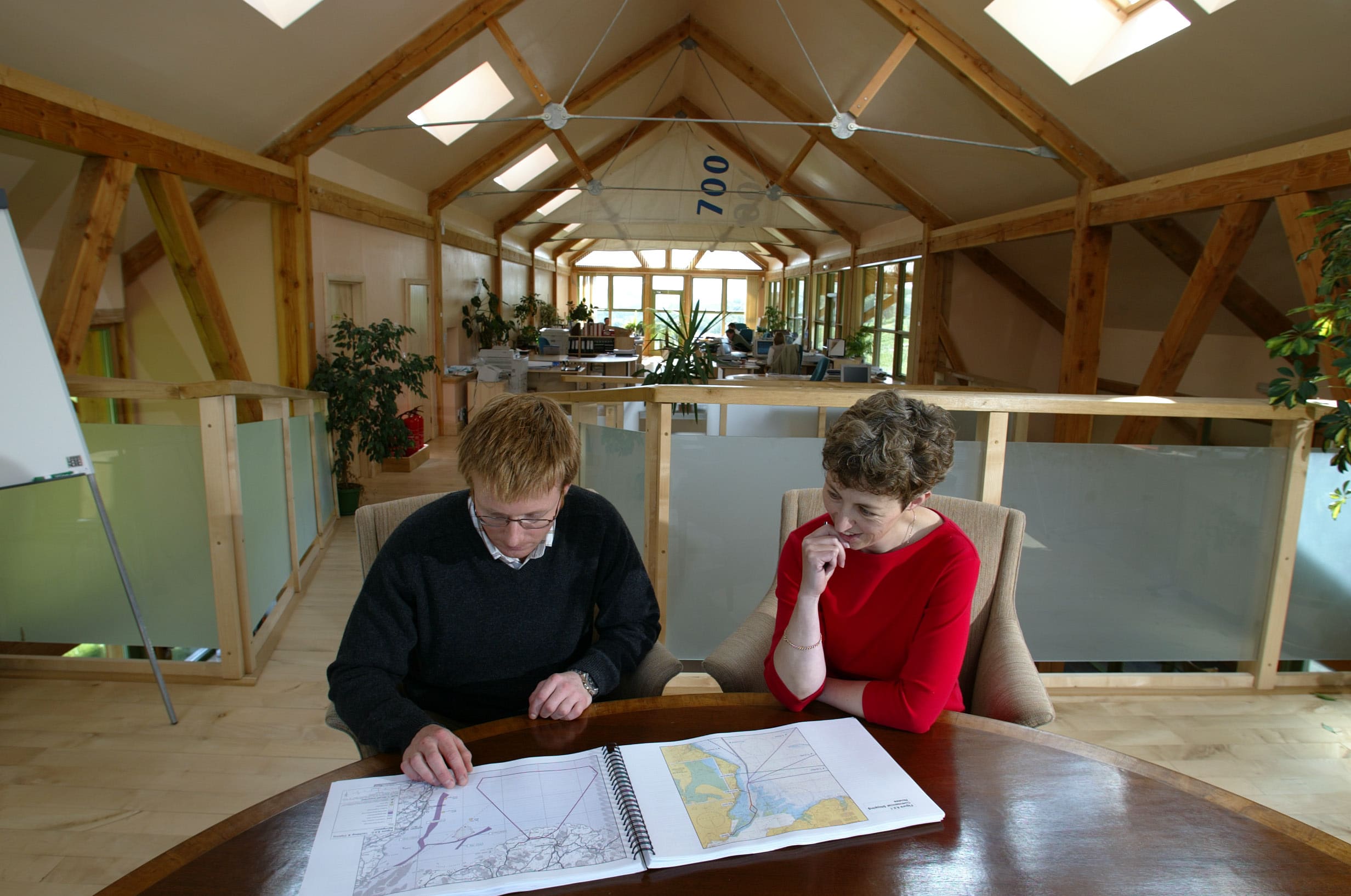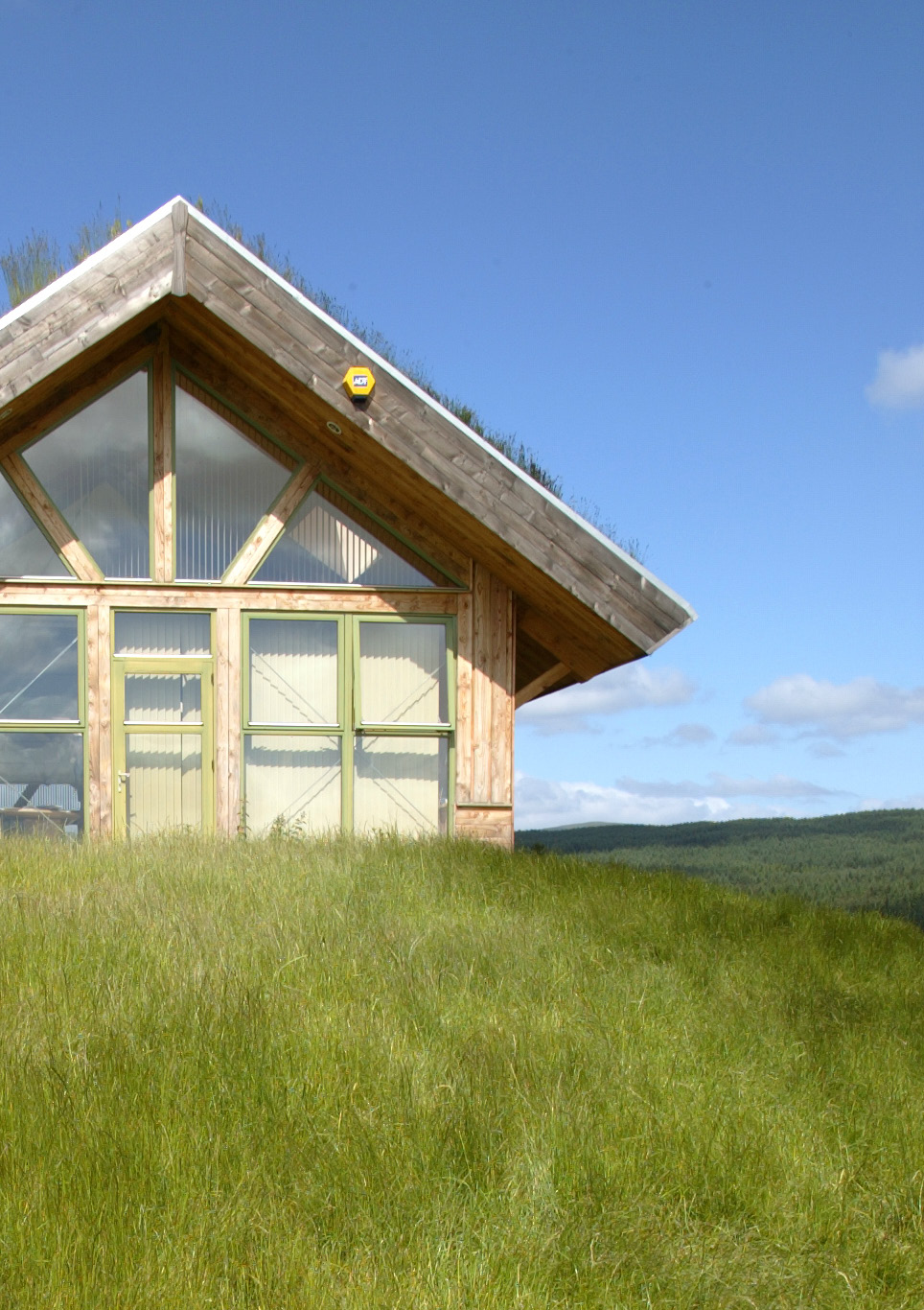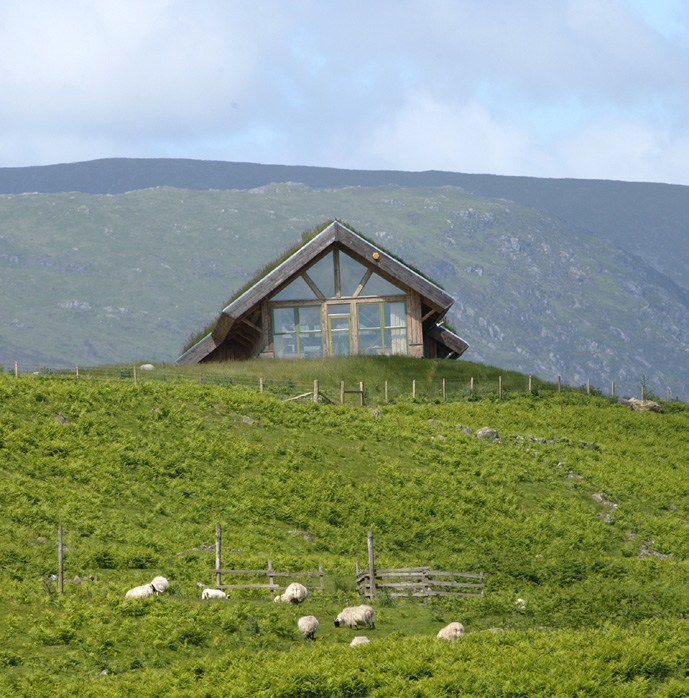The Forrest Estate in Galloway is one of the largest private woodlands in Scotland. It's owned by Fred Olsen Limited, the proprietor of the Natural Power Company.
In 1999 the estate commissioned an architect to build a comfortable, healthy and bright office space of around 360 sq. m. for Natural Power, located on the Forrest Estate.
Read this case study to find out how the Forest Estate gained a natural power office.
The design needs of the Forest Estate
The facility had to accommodate up to 18 workers, with blueprints planned around a hot-desking design for complete flexibility.
In developing the office building, the company aimed to use timber sourced from the estate, meeting the company’s objectives for the diversification and expansion of its operations.
Timber was cut using a portable sawmill and air-dried on location for around 16 weeks before construction started.
Design approach for the Natural power office
The client had a total commitment to meeting its aims for sustainable design and was very knowledgeable about sustainable features.
Hiring the right architect for their sustainable design needs
The architect Neil Sutherland was selected for his experience in designing timber and his ‘Norwegian’ style approach to producing simple but elegant designs.
Neil Sutherland has been particularly concerned with developing an appropriately robust, versatile and sustainable modern building tradition for the Highlands and rural Scotland. He already had experience in incorporating several sustainable design elements.
These included:
- the elimination of chemical treatments through appropriate materials selection and designs
- use of local timber and earth sheltered features including, retaining walls and grass roofs
- reduced energy use both in terms of embodied energy and lifetime energy use
But the office for Natural Power was Sutherland’s first office design.
A motivation for renewable energy systems
Both client and tenant were directly involved in renewable energy systems.
The Forrest Estate invested in hydropower schemes as early as 1983. They then diversified into commercial forest management, growing native timber rather than raising livestock.
Forrest Estates had a commercial motive for using building materials grown on their estate. The ‘organic’ nature of the building was also consistent with the ethos of other local businesses, which included an organic farm.
For Natural Power, the building provided an identifiable company image for a business promoting renewables. One of the aims of the building was that it should show that renewables have sound business sense, costing little more to use and bringing long-term cost benefits.
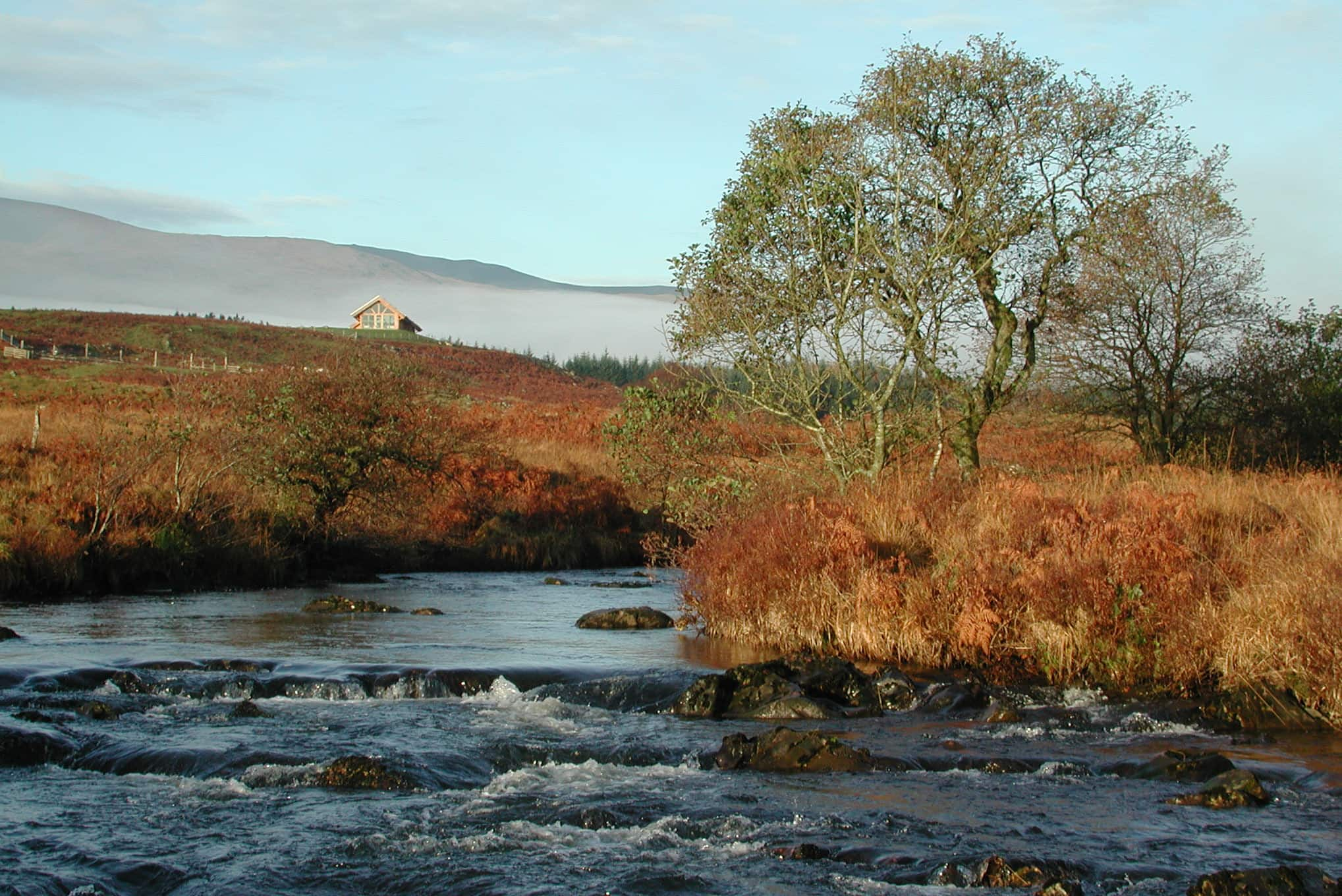
Building process
The chartered surveyor managed the project, acting on behalf of the client. Carpenter Oak and Woodland Limited, a timber frame specialist, built and erected the frame. The architect sourced other materials, and a local builder provided the labour required for the build.
Material considerations
All timber, with minor exceptions, was sourced in Scotland - with two-thirds coming from the Forrest Estate. Some examples include:
- large section heartwood Douglas Fir for principal timber frame with exposed post and trusses
- european Larch for soleplates and counter battens
- green Oak for exposed balcony and escape stair (60 minutes structural integrity for fire)
- less durable Norway Spruce used for floor joists and framing
- the staircase was locally fabricated using Oak and Sycamore
- scottish Sycamore and other Scottish hardwoods used for other internal finishes
- appropriate timbers used to avoid the use of chemicals
Other materials used for the build include the following:
- For path materials and mulch, the design incorporated the use of sawmill waste
- The car park base used locally quarried stone
- Recycled materials were also used, such as Warmcell insulation
- The 150mm turf for the roof was stripped from the site and the adjacent hill
- Groundwater taken from a nearby borehole, and drainage was to a septic tank
Support from Dumfries and Galloway Council
Dumfries and Galloway Council was very supportive of the sustainable approach the Forrest Estates incorporated for the build.
They liked the modernity of the design, its consistency with their image as ‘The Natural Place’ and the new jobs it would bring into the area. Some of which were high value.
Their main concern about the building was that it could become a ‘stranded asset’ should Natural Power move out.
Fire escape considerations
Building Control was initially concerned about the timber fire escape and requested that it should be built in with metal. But they accepted the feature when assured that the timber used had at least 60-minute fire resistance.
The result of the build
The building is placed on a hillock, set back from trees and laid out on an east-west orientation to maximise solar gain along the heavily glazed south face.
The office is earth-sheltered and built into the hill at the east, providing level access to the first floor. The elevated position allows foul water to drain naturally into the septic tank.
Energy usage
The building has low embodied energy in both construction and use. It's completely free of external infrastructure support, using local hydropower from the estate’s hydro scheme (installed in 1983), ground water from a bore hole and draining to a septic tank.
Underfloor heating is also powered by the Estate’s hydro scheme. 225 mm cellulose fibre is used throughout to provide high levels of insulation. Concrete blockwork partitions and a concrete floor slab provide large thermal storage potential.
Solar hot water panels provide hot water. Double glazing using low-emissivity glass is fitted throughout the building. Good solar orientation provides good natural daylighting, and generous overhangs provide good glare control.
Reducing costs
It was hoped to use locally grown wool for insulation, but treatment costs proved too expensive. Water-based rather than organic paints were also used to reduce costs.
Standard Velux roof lights were used instead of ridge glazing to save costs and to allow for increased ventilation.
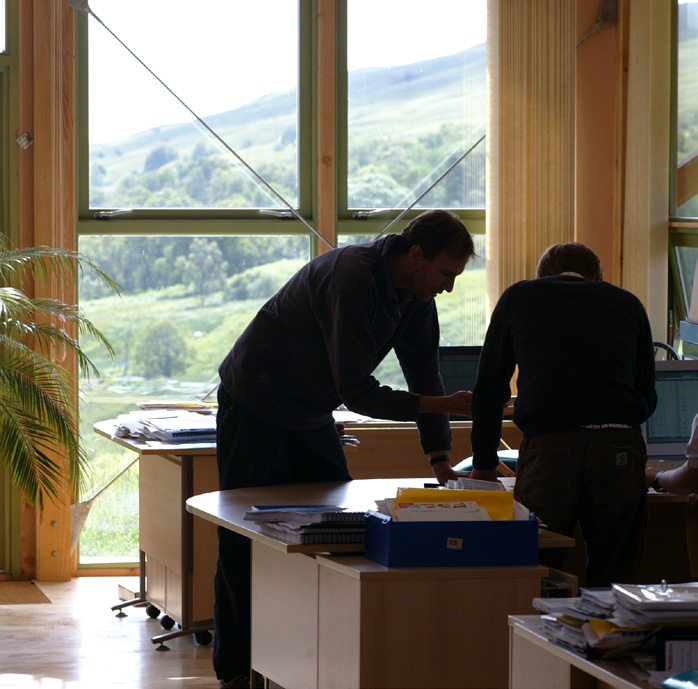
A natural power office that meets the brief
The total cost of the development, including infrastructure provision, was £320,000, which was considered comparable with standard office construction costs. The building uses 70% less energy than an equivalent sized conventional building.
The office development has created work locally through harvesting the timber and provided high-value jobs in the area.
Many employees cycle to work, and the Forrest Estate has set up a car share scheme. The building provides good promotional footing for the occupant and is a sound and solid base for further sustainable activities.
Image credit: Neil Sutherland Architects
Key takeaways and lessons learned from this project
At the start of the process, the client invested in a full feasibility study to investigate a number of possible sites for the building and to critically examine the various options for sustainable design.
It was felt that this feasibility study was a useful reference point during the construction period and served to remind participants of the aims of the design set out at the start of the project.
An experienced lead consultant needs to be selected to integrate, direct and co-ordinate the project beyond a set of drawings and specifications. Doing so ensures and maintains the integrity of the design throughout construction.
The project demonstrated how rural buildings can achieve a high degree of sustainability by using appropriate local materials for the build.
Contractors often lack the knowledge and experience of implementing a sustainable design, which is often offset by increasing the tender price. In this case, the procurement method used helped reduce the overall costs to the client by removing risk from the contractor.
The architect was closely involved in the construction work, taking on a range of roles from sourcing and transporting timber from the Highlands, sourcing other materials and providing a costing service.
This was an example of ‘partnering’ in the construction process, using open-book accounting instead of competitive tender. One advantage of this approach may be avoiding the need for a quantity surveyor, who may lack knowledge of the actual costs of specified sustainable features.
This approach also allows the architect to remain close to the design during the construction process, reducing the extent to which the contractor can provide his interpretation of the design.
One disadvantage of the open tender process is the lack of cost certainty for the client. Though, careful budget control can provide a cheaper solution to the risk-sharing process.
As a result of this experience on the project, the architect is now developing more sophisticated spreadsheet-based budgeting systems.
The client is planning to extend the office to provide space for additional workers and has noticed the availability of sourcing the materials cheaply. This is because the suppliers are more confident about sourcing these alternative materials, having seen their use proven in this building.
In terms of material use, it was noted that sources need to be carefully checked – slate brought in from Wales and apparently ‘Welsh’ turned out to have been imported from Spain.
Header image credit: Neil Sutherland Architects
A library of sustainable building materials
Our website includes a web-based resource that showcases sustainable, traditional, innovative, recycled and low carbon building materials. If you are looking for inspiration or information on different types of materials to consider for your project, visit our materials library.

